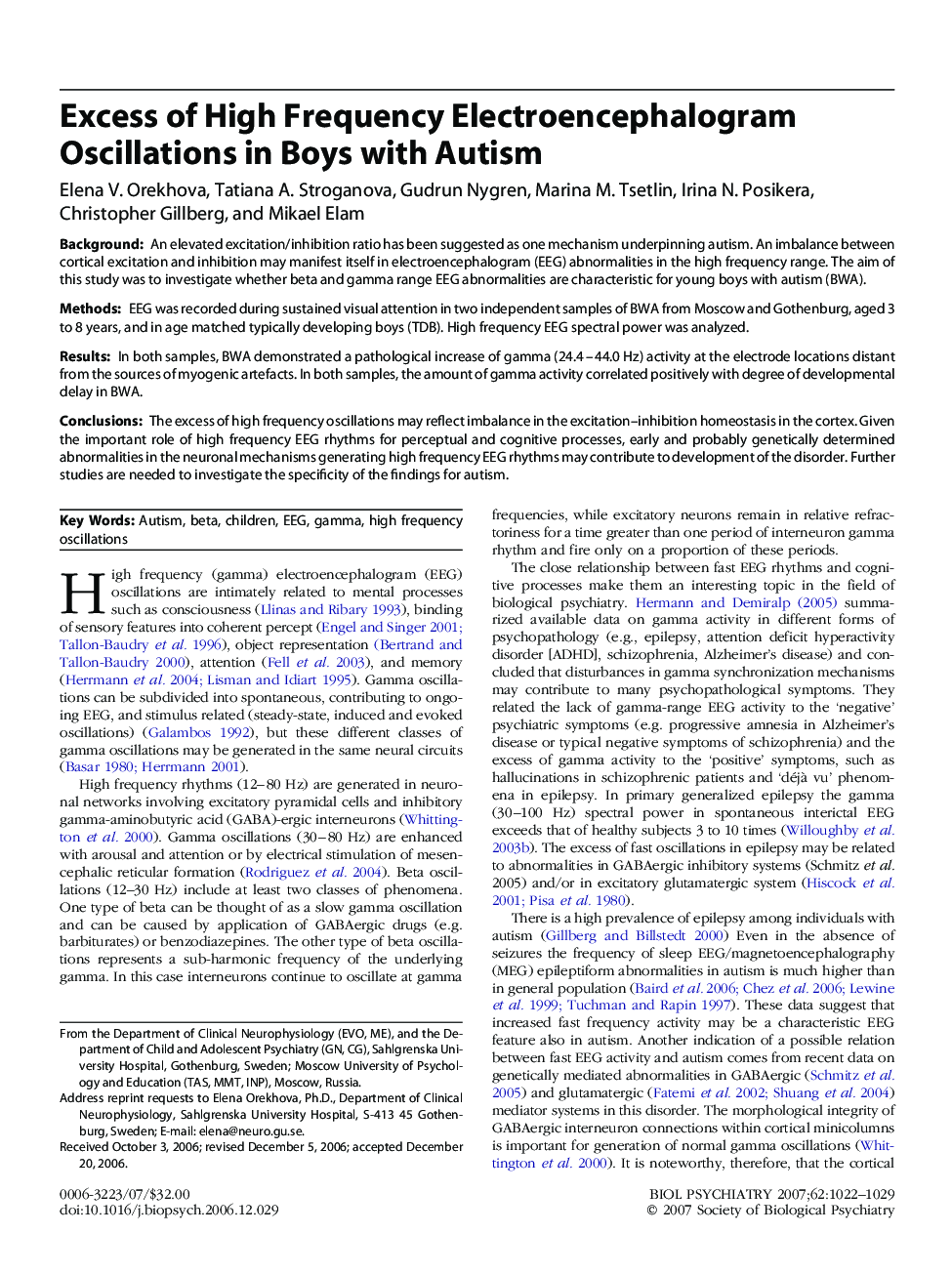| Article ID | Journal | Published Year | Pages | File Type |
|---|---|---|---|---|
| 4180593 | Biological Psychiatry | 2007 | 8 Pages |
BackgroundAn elevated excitation/inhibition ratio has been suggested as one mechanism underpinning autism. An imbalance between cortical excitation and inhibition may manifest itself in electroencephalogram (EEG) abnormalities in the high frequency range. The aim of this study was to investigate whether beta and gamma range EEG abnormalities are characteristic for young boys with autism (BWA).MethodsEEG was recorded during sustained visual attention in two independent samples of BWA from Moscow and Gothenburg, aged 3 to 8 years, and in age matched typically developing boys (TDB). High frequency EEG spectral power was analyzed.ResultsIn both samples, BWA demonstrated a pathological increase of gamma (24.4–44.0 Hz) activity at the electrode locations distant from the sources of myogenic artefacts. In both samples, the amount of gamma activity correlated positively with degree of developmental delay in BWA.ConclusionsThe excess of high frequency oscillations may reflect imbalance in the excitation–inhibition homeostasis in the cortex. Given the important role of high frequency EEG rhythms for perceptual and cognitive processes, early and probably genetically determined abnormalities in the neuronal mechanisms generating high frequency EEG rhythms may contribute to development of the disorder. Further studies are needed to investigate the specificity of the findings for autism.
